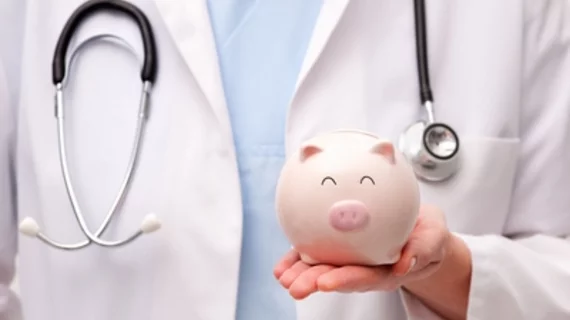Women, uninsured most likely to skip prescription drugs to save money
Women and uninsured individuals are the most likely candidates to skimp on daily medications and practice other money-saving techniques in an effort to reduce their prescription drug costs, according to a report published by the CDC this March.
Authored by Robin A. Cohen, PhD, and colleagues at the National Center for Health Statistics, the CDC’s report drew on 2013-2017 National Health Interview Survey data to analyze trends in prescription drug use in the U.S. Specifically, it looked at how Americans managed their drug costs in the four-year window and whether they aimed to reduce those costs by skipping medications, asking their doctors for lower-cost alternatives or practicing alternate therapies.
Overall, the team found the use of strategies to reduce prescription drug costs decreased between 2013 and 2015 before flatlining through 2017. The percentage of 18- to 64-year-old adults who were prescribed medication within the past year and asked their physicians for a cheaper option decreased from 25.8 percent in 2013 to 19.8 percent in 2015 before averaging 19.5 percent through 2017; the proportion of adults who didn’t take their medication as prescribed decreased from 14.9 percent in 2013 to 11.1 percent in 2015 before hovering around 11.4 percent through 2017. The percentage of adults who used alternative therapies also decreased, from 5.8 percent in 2013 to 4.8 percent in 2015.
In all three cases, the number of patients who asked their doctors for lower-cost medications, skipped doses or practiced alternate therapies were highest among women and uninsured adults. Women were more likely than men to ask their doctors for lower-cost substitutes (22 percent compared to 16.4 percent, respectively), and uninsured adults were more than twice as likely as those with private health insurance or Medicaid coverage to ask their doctor for a lower-cost medication (39.5 percent compared to 18 percent and 15.7 percent, respectively).
Similarly, women were more likely to not take their medication as prescribed (12.7 percent compared to 9.7 percent of men), and uninsured individuals were more likely than those with private insurance or Medicaid to skimp (33.6 percent compared to 8.4 percent and 12.5 percent, respectively).
“Cost-saving strategies to reduce prescription drug costs may have implications for health status and have been associated with increased emergency room use and hospitalizations compared with adults who follow recommended pharmacotherapy,” Cohen et al. wrote.
Retail prescription drug spending accounted for 10 percent of total national health expenditures in 2017, the authors said, but the growth in national retail prescription drug spending has begun to slow in recent years. Around 70 percent of prescriptions require some out-of-pocket cost.

